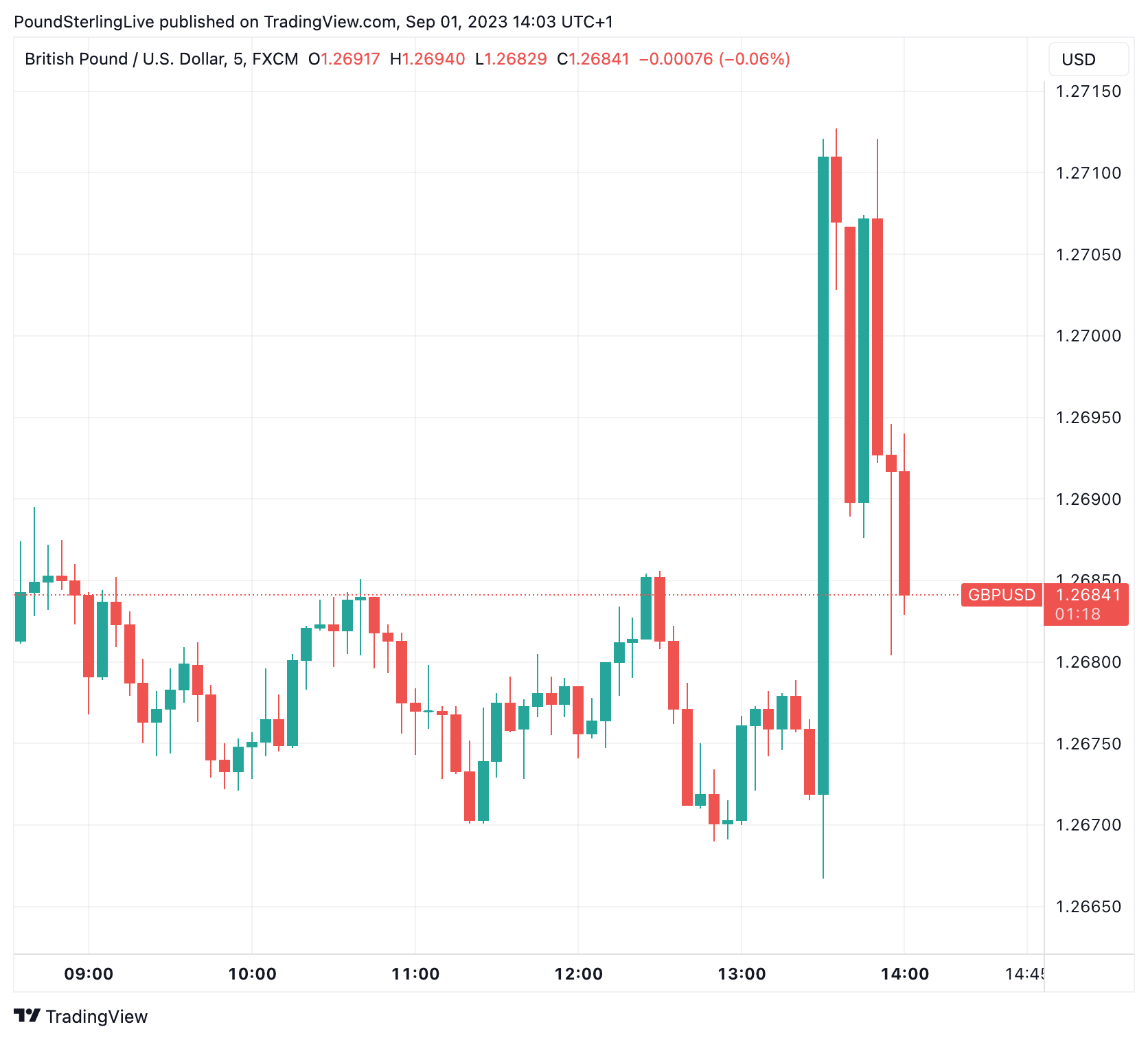Dollar Dips on News of Rising U.S. Unemployment, But Don't Expect a Capitulation Yet
- Written by: Gary Howes
-

Image © Adobe Images
Labour market figures show the U.S. economy continues to add jobs at a strong pace, although further signs of a slowdown were apparent in the August data released on September 01.
The Dollar was weaker, bonds and stocks higher after investors reacted to news of an unexpected rise in the U.S. unemployment rate that lowered the odds of further Federal Reserve interest rate hikes.
To be sure the economy remains firm as the headline non-farm payroll figure showed 187K jobs were created in August, above the 170K the market was expecting and higher than July's downwardly revised 157K.
But it was news that average hourly earnings grew 0.2% month-on-month, half of July's 0.4% growth and below expectations for 0.3%, that markets appear to have initially reacted to.
An unexpected rise in the unemployment rate to 3.8% from 3.5% prompted the Dollar to fall as investors lowered the odds of further Fed hikes and brought forward the timing of an expected rate cut.
Money markets - SOFR futures - moved to price in a faster pace of cuts as softening wages reduced the odds of a November Fed hike to around 1/3.
The Pound to Dollar exchange rate initially rallied on the news to go to 1.2710 before paring that advance somewhat, suggesting there is no significant medium-term game changer in the data given the unemployment and wage figures were counteracted by the headline jobs reading.
Above: GBPUSD at 5-minute intervals showing post-NFP market action.
The U.S. Dollar has rallied over the course of the past six weeks driven by a series of stronger-than-expected data releases and it might take a more concerted downshift in the data pulse to materially shift sentiment to the Greenback.
However, analysts at HSBC say it is difficult to see the Dollar rally extend in a meaningful fashion from here.
"We believe the USD will struggle to extend its gains as yields have already moved far and the USD bull will need feeding with hawkish US data and further data shortfalls outside of the U.S.," says HSBC strategist Daragh Maher.
"Our suggestion that the USD may find additional gains more difficult does not imply that a sudden broad reversal lower is likely either," he cautions.
For the Dollar to turn meaningfully lower expectations for U.S. rate cuts must build, but this is something the Fed is keen to avoid.
"At Jackson Hole last week, Jerome Powell made it clear to the market that it shouldn’t expect cuts anytime soon, and with the economy still holding up its end of the bargain, the soft landing the Fed craves so much is within sight," says Richard Carter, head of fixed interest research at Quilter Cheviot.
Carter says it is however clear that the pace of labour market growth is beginning to slow, and with previous months' reports being revised down and the unemployment rate ticking up to its highest level in over 18 months, it is perhaps indicative that we are at or near the end of the rate hiking cycle.
"The Fed won’t want to overcorrect, and with its next meeting around the corner, and the data remaining stable for now, we can see it hitting the pause button and moving into a holding pattern," says Carter.
The economist says it can be anything from 12 months to two years for rate increases to feed into the real economy, so realistically we are just at the early stages of the impacts being felt.
"Clearly, however, the labour market remains a position of strength for the US economy and indicates that a recession at this stage is unlikely, although it cannot be discounted entirely. As inflation has reached more palatable levels, the next task is to ensure the economy doesn’t lose the momentum it has built in what has been an incredibly difficult environment," says Carter.











